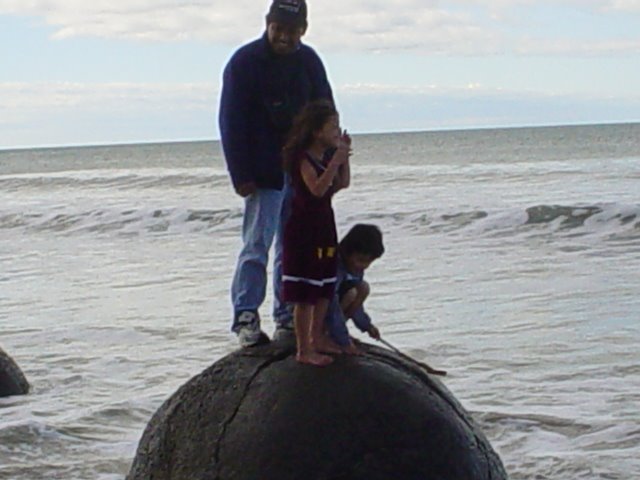Story from My Mother X: Mecca and Madinah





Story from My Mother X: Mecca and Madinah
1. My parents were very fond of their experience doing the Haj. Even though it was a few years ago, they were talking as if it was yesterday. It was a lifetime trip for them, their one and only trip for the Haj.
Let me go straight to the golden question; yes my father was lost for almost 24 hours in Mina, after the obligatory stone throwing. According to my mother, Basiron, Siti, my father and my mother were walking together, and kept an eye on each other so that they don’t get lost, or fall. But all of a sudden my father was nowhere to be seen, they were searching for my father, but they couldn’t find him. So the best thing for them to do is go back to the tent, report to Tabung Haji representatives and pray. Basiron also rang home, so that everyone in Malaysia would also pray together. 24 hours later, my father found his way back to the tent. He told my mother that someone big and tall, asked him along to go around the stone throwing site more than a couple of rounds, and took him back to the Malaysian tent, “This is your place”
Who was the big and tall man? No one knows.
2. At Masjidil Haram in Mecca, while doing tawaf, a group of people always do the tawaf in group, and walk close to each other. These group of people, when they walk doing tawaf, would push everyone else aside, including old people and the infirm. So watch out, you might get hurt being pushed aside or stepped on.
3. One of the big no-no while you were at Tanah Haram is to say bad things to living things and animals that you came across. There are many cats in Mecca. They would be begging for food at the food courts and dining halls, even in your dorm room. There was a story of man who had some meat set aside on his bed. While he was eating some, one cat came and asked for some, by meowing. He asked the cat to go away, and abuse the cat verbally in the process. When he was gone to the Masjid, a group of cats ripped his bed sheet and his clothes.
4. One of my mother’s roommates had some bananas on the bed. She wanted to eat it later, but a big mouse ate it that night. The woman was pissed off, she said, “Kurang ajar betul tikus tu”. So what happened next? The mouse left a deposit of excrement on the woman’s blanket.
5. The Masjid either in Mecca or Madinah is big. When you enter through one door, do remember which one, and if you are lost, better stay at one place, rather than walking around trying to find your way. A friend of my mother, who lives in the next village, went to hajj with her son. She was lost for 3 days, because she kept on walking, trying to find her own way.
6. There is a cave in Mecca, the Thur Cave, where the Prophet meditated and spent his time before he became Prophet. Any Muslim who is clean spiritually and free of sins, big or small would fit in the cave. But if you are not clean from sins, you wouldn’t fit in.
At the Prophet’s tomb in Madinah, the same thing applies, you may not fit into the door, and if you get in, you may not be able to see the tomb. My mother told me that her companion could get in the door and see the tomb, but that there was no carpet nor prayer mat on the floor. My mother told me that when she came in there was carpet and prayer mat, so she could do her prayer, but her companion only found desert sand on the floor. She asked my mother if she took the prayer mat (sajdah) away. My mother said no, and suggested to her companion that she perform her prayer on the sand.
7. Beware, if you have been a bad person, and hasn’t asked forgiveness from Allah, or Allah has not forgiven you for your past sins, Allah would show His displeasure to you. My mother told me the story of Mbok N* (name withheld, because she is still alive, but couldn’t move anymore) who went to hajj a few years before my mother. She told my mother that in Masjidil Haram she went for tawaf, but couldn’t see Kaaba at all. Yes she went around the Kaaba with others, but couldn’t see the Kaaba. Then at Arafah, for a day and night, she felt that she was in a forest full of duri (nettles) and fiery red ants. She couldn’t sit nor move. The ants were biting her legs. But when the hajj rituals at Arafah finished, she was released from her misery.
I was told by my mother that in her younger days she helped many women who wanted to abort their fetuses, among other things.
“Kalau di uli saja, lama lama kan keluar” my mother said.
“Dia tu sukakan duit, masa dulu dia kenakan bayaran RM600-700 untuk satu kes, jadi ya sauk duit saja” she continued.
I remember all those years ago, she had the reputation as a marriage broker, unmarried men who were looking for a wife would go to her, and she then would visit the families of available unmarried women and asked if any of the unmarried women interested. She acted as the village matchmaker, and charged the groom a couple of hundred ringgits for the privilege. Being a matchmaker is an honourable job in Islam, same like building a mosque/masjid.
8. Tahiron told me of his experience in Mecca. He was at the canteen with his wife, he ordered tea, and his wife ordered Nescafe. But when the drinks arrived, his wife wanted to swap, she wanted the tea instead.
“Habislah, kalau minum Nescafe ni tentu tak boleh tidur” Tahiron said to himself.
That night, after seeing off his wife, and had shower, he went to bed, but he couldn’t sleep. He felf as if a bright light shining to his eyes. He remembered what he said, about not being able to sleep if he drink Nescafe. So he wanted to punish himself that night by going to Masjidil Haram and perform tawaf and sya’ee.
After that, while still at the Masjidil Haram, he saw a group of Indonesian pilgrims kissing and hugging a stone pillar just 10 metres away from him. He was curious, so he asked an Indonesian pilgrim who was passing by.
“Setahu saya, masa saya belajar Haji, tidak ada amalan seperti ini dalam ibadah haji pakcik, amalan apa kah itu?” Tahiron asked, as far as he knew, there is no ritual like the group of Indonesians was doing in Hajj.
Do not follow them, or come near that pillar, the old man said. What they were doing was wrong, if do what they do, a Djinn will follow you back to your homeland. That pillar is Djinn’s pillar, the man continued.
Tahiron went back to his hotel room, and before he arrived at his room he was already so sleepy.
On the last day before he departed for home, Tahiron joined Isha prayer at Masjidil Haram. He was at the front of the Kaaba, and was talking to an old Indonesian man. He explained to me that the lights at the Masjidil Haram are so bright, that you couldn’t see the night sky. The old Indonesian man explained to him that if you can see the moon than the evening star (Mars) while you were at Masjidil Haram, there is a very good chance that your wish would be granted by Allah. He looked up to the night sky, and to his surprise he saw the moon and the evening star between two minarets. So he showed them to the old man, and the old man said that he wish to see the imam, Sheikh Sudais. To his surprise shortly after that came an Arab policeman telling him to move aside and brought along a large prayer mat, then another one bringing microphone set. The microphone system at Masjidil Haram has 5 microphone at top at standing height, 3 in the middle, rukuk height and 3 at the bottom, for sujud. He said Sheikh Sudais is not a large person, of a small stature, about 5’ 4”. So that Isha prayer they both had the privilege of performing prayer right behind the Imam Sheikh Sudais.



















































